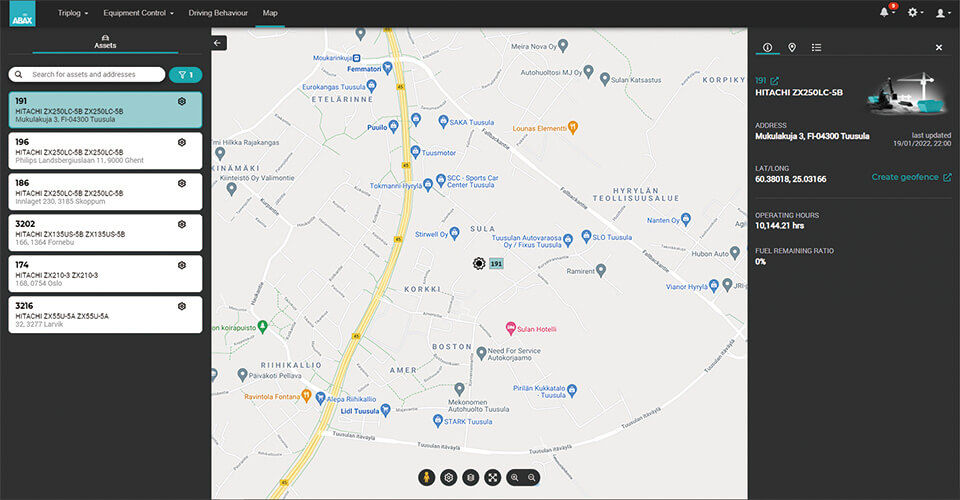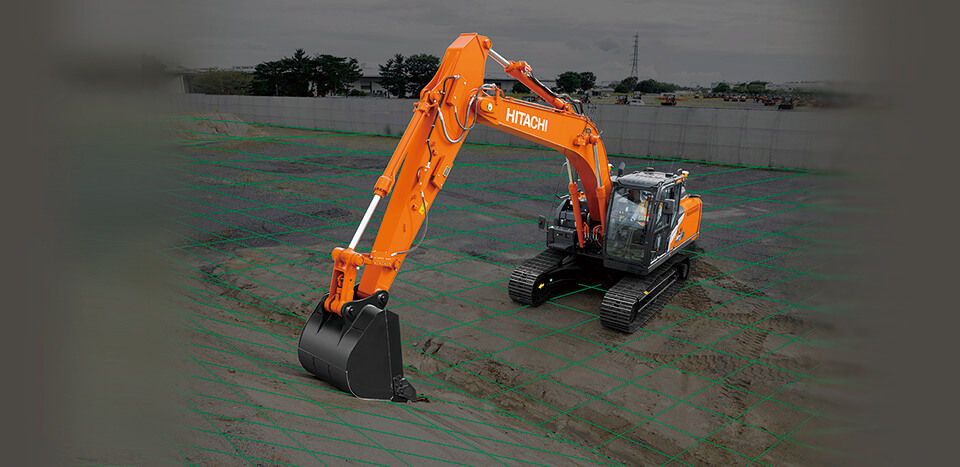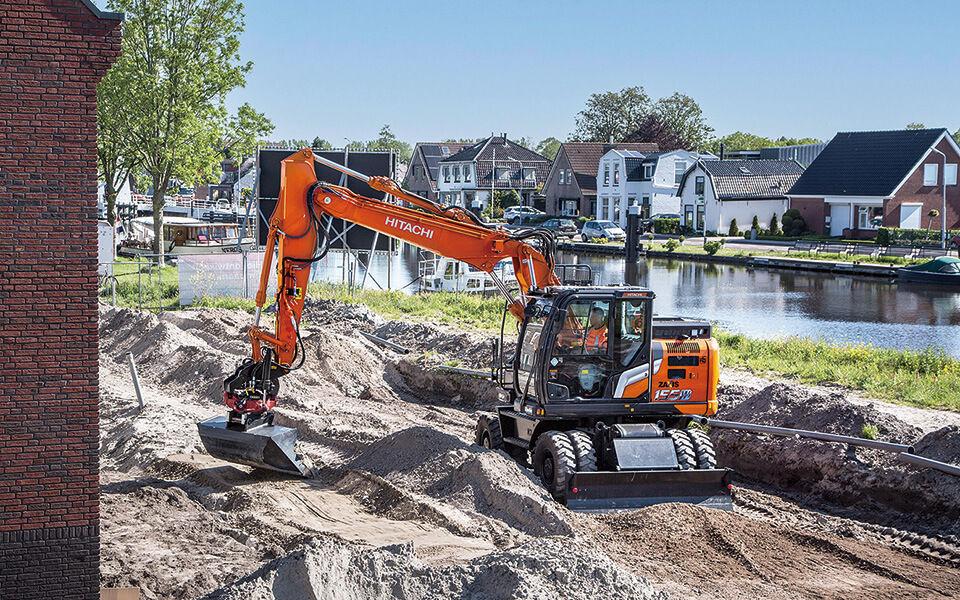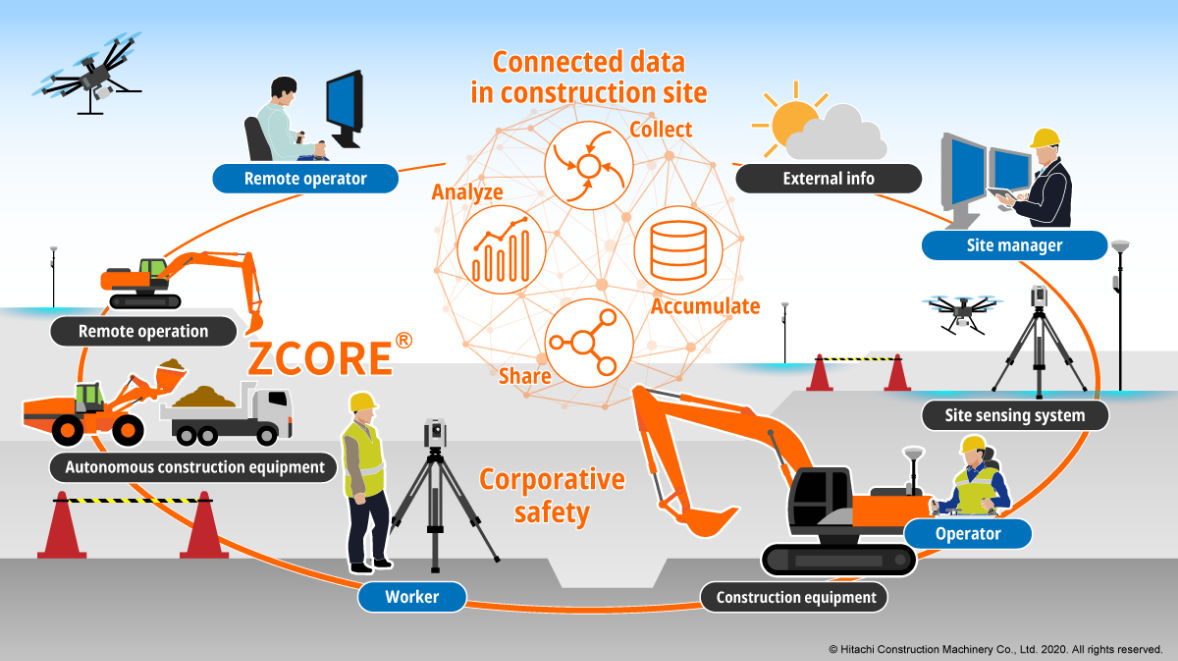What’s happening? Overseas ICT construction
What’s happening? Overseas ICT construction


i-Construction is leading the way for the gradual spread of ICT construction in Japan. Advanced ICT is also in use in Europe.
We can look for hints to possible applications by comparing how ICT construction is evolving in Japan and overseas.

Hitachi Construction Machinery Europe
Solution Linkage
Manager
Ryo Kurihara
Topic_1
How is ICT construction spreading?

In Japan, where there is a shortage of workers in the construction industry as a whole due to the shrinking working-age population, and social infrastructure is deteriorating, i-Construction was launched in 2016 as a government-led initiative to raise productivity on construction sites. It aims to introduce ICT into the whole series of operations from surveying through design to construction and management. The use of ICT construction is spreading in public works projects under the jurisdiction of the Ministry of Land, Infrastructure, Transport and Tourism. In 2018, the application of AI, the IoT, and other new technology as an element in the Cabinet Office’s Public/Private R&D Investment Strategic Expansion PrograM (PRISM) accelerated efforts to raise productivity in construction-related work. These technologies are expected to be even more widely applied to private sector construction works and small-scale construction.

Advanced ICT construction is also in use in Europe. Finland and Norway face emerging problems similar to those in Japan, such as shortage of skilled engineers and difficulty improving productivity, so they moved quickly to deploy ICT construction in the 2000s. In the UK, semi-autonomous operation technology is being applied to raise productivity and safety by strengthening assistance to experienced operators, and the use of drones is reducing on-site personnel. That trend is also expanding in France, Germany, and Holland. The private sector is characteristically leading ICT construction to save labor and raise efficiency.
BIM (Building Information Modeling)/ CIM (Construction Information Modeling) is making particularly rapid progress overseas. This is a platform for using 3D data from the planning stage of buildings to computerize the whole series of construction-related processes. It has become the norm in project management in Europe. In the UK, BIM is mandatory for the design and construction of civil engineering and building projects above a certain size that are ordered by government offices. BIM is moving towards becoming mandatory in many European countries. In Singapore, electronic submission using BIM is mandatory for all applications for confirmation, and the same trend is spreading around Asia. Japan is at the stage of starting to apply such measures in earnest.
Topic_2
An attitude of “getting closer to the customer” is in demand around the world
Trends towards falling working-age population are also under way around the world, while demand for safety assurance, higher productivity, and lifecycle cost reduction on construction sites is rising. Hitachi Construction Machinery is aligning itself with such calls and focusing its efforts on expanding and supporting ICT functions which raise safety and productivity through simpler operation. In Europe, technical support for ICT construction is commonly provided directly from surveying equipment manufacturers to their customers. In that context, Hitachi Construction Machinery UK is training “HCT* engineers” as ICT specialists, and providing setup and general support for ICT construction machines and their attachments. Customer attitudes and skills for ICT vary between countries. It is important to have an approach of providing support adapted to issues, through communication based on correct knowledge and experience.
*Hitachi Connected Technology
Topic_3
Efficiency improvement in construction management through the use of data
Equipping construction machinery with mobile communications system and applying telematics technology to monitor positions and performance, is advancing rapidly in Europe and North America as an element in DX. On real construction sites it is not uncommon for machines from various manufacturers to be mixed together, but centralized tracking and checking of data from all machines is essential. To meet that need, Hitachi Construction Machinery Europe and the major telematics company ABAX are developing a proprietary operation management system (illustrated below). At the same time, they are working with Hitachi Construction Machinery to develop an API (Application Programming Interface) to achieve optimization of data management with machinery. These systems interconnect, so that customers can receive every 10 minutes the data that they used to receive every 24 hours. Users have this fleet management solution, which does not dictate any choice of devices, so they can keep track of location and operation information about all their construction machinery, tools, vehicles, and other assets. This system can also be linked to remote monitoring by ConSite, which is Hitachi Construction Machinery’s service solution, to visualize fuel consumption and CO2, as a way to meet the need for machine lifecycle cost reduction.
Major general contractors in the UK use the API to enhance on-site efficiency and reduce life cycle costs, and they have actually succeeded in cutting idling time and fuel consumption. Demand is also expanding rapidly in France, and the API is used in stone crushing sites. Construction management is becoming more efficient and advanced around the world.

Topic_4
Trends in ICT construction machinery

i-Construction has been spreading, and ICT construction machinery is now being introduced on many construction sites. There are two categories of ICT construction machinery: Machine control (MC), which uses 3D design data to automatically control machinery through construction in real time, and machine guidance (MG), which uses positional information to support operation. This ZAXIS200X hydraulic excavator by Hitachi Construction Machinery, which is equipped with ICT functions, is a well-trusted machine, widely used by customers around Japan, on both a rental and a purchase basis. The ZX200X-7 is its latest version. Hitachi Construction Machinery’s machine control technology, which is the distillation of control technologies, can achieve high-precision work, regardless of the operator’s proficiency level. The ICT hydraulic excavators which Hitachi has been supplying in Japan are now in use in demonstrations around Europe, as Hitachi aims to spread into the European market.



In Japan it is common to change construction machinery to suit the content of the task. In Europe, in contrast, multiple attachments are used on the same hydraulic excavator to suit the task at hand. In that context, it is seen as common sense by now to equip them with a tilt rotator. A tilt rotator is an attachment for a hydraulic excavator that makes diverse tasks possible by rotating the bucket to any desired angle. Construction work in confined spaces is common in Europe, so this attachment is particularly well liked for making it possible to work efficiently without any action at the controls. In France, it is widely used for tasks such as forming slope angles and excavating ditches while checking the depths of gas pipes. This function is usable in a wide range of situations, and it is good for the environment because it leads to enhanced working efficiency and better fuel economy on site, with fewer bucket changes. Hitachi Construction Machinery UK, moving fast to meet widespread demand for adaptation to ICT, supplies products such as ICT hydraulic excavators which work with tilt rotators and machine control.

Towards a future of harmony between people and machines
~ Autonomous operation and remote control ~
Expectations are rising for autonomous operation of construction machinery as a way to ensure safety while raising productivity by saving labor. Hitachi Construction Machinery paints a picture of the future of construction sites with the concept of “harmony between people and machines”. It has developed autonomous construction machinery, and the “ZCORE” system platform, which facilitates functional expansion. This approach uses mechanical systems to handle the series of processes of recognition, judgment, and execution by the on-site operator. “ZCORE” has two main components. The data processing platform gathers information from various onboard sensors and communications networks and makes judgments. The vehicle control platform controls optimum movements of hydraulic and drive equipment in line with that judgment. Hitachi Construction Machinery uses these platforms, which have great potential for scalability and growth, to accelerate the development of autonomous construction machinery while adding and scaling functions to meet the needs of its current customers. Expectations are also growing for remote control as a way to ensure operator safety and achieve remote work on construction sites, and also for operation in disaster areas where people cannot enter. Hitachi is focusing its efforts on developing transmission channels to connect between sites and remote offices. It is working on proving trials of Solution Linkage Wi-Fi wireless LAN and equipment, which allows a single operator in one remote control chair to work over a regular 5G line and switch between multiple machines, picking the right one for each task. Preparing for the coming construction environment of the near future.


